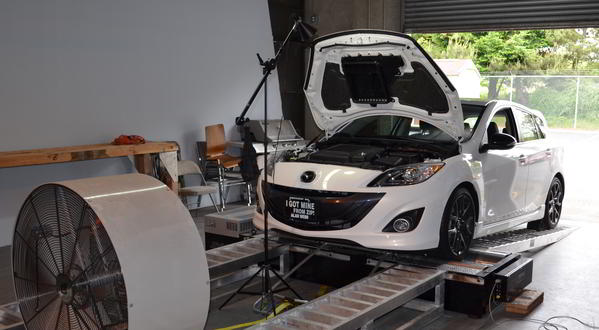Welcome back to the Fuel Pump Comparison, Part 3. If you haven’t been following along with us feel free to read Part 1 and Part 2.
Now that we have a good understanding of the basics for these high pressure fuel pumps we can start to really dig deeper into the specifications. One of the items we were really curious about were the materials used in the construction of these pumps. We decided to have the hardness tested and ascertain the materials used. The factory pump internals do not use any coating, the hardness test showed us that the internals went through a hardening process as the core was significantly softer than the surface. Because of these hardness requirements, many other aftermarket internals use a coating of some sort to decrease friction between the piston and the sleeve. As for what the stock internals are made from, we answered that. Except for the hardening procedure, according to their chemical breakdown, they match a common die steel, so nothing too fancy.
We now understand why it is so common to hear that the factory pumps are machined to such tight tolerances. At high rates of speed and pressure with a hardened material, you could easily have failures if tolerances were not correct.
When testing the fuel pumps on the dyno, we chose a Mazdaspeed 3 (2nd gen) with bolt-ons and a stock turbo. The factory boost levels we maintained 1700psi all the way to redline with no issues. As soon as we raised the boost slightly, the fuel pump began to drop pressure. With a Cobb AccessPort and a stage 2 reflash, the pressure of the pump would drop under 1000psi by 5000rpms. If you’re going to turn up the boost or run a reflash, an upgraded fuel pump is a must.
Our dyno is able to adjust load, so in our testing we chose a load value typical of 4th gear on the street and tested all pumps with the same load on the same day, only hours apart from each other. All the pumps tested performed very similar for power but the stock pump actually ran a lower air/fuel ratio. This is because all of the pumps were tested with no tune. When we changed to the Cobb stage 2 map, the power levels increased but we could not complete the test with the stock pump as it just could not keep up with the demand. With the stage 2 tune, we found the air/fuel ratios to be very, very rich and had a very real possibility for causing high load misfires. We actually experienced that several times on colder days. With no tune, this does not happen but the car did still run very rich in boost with all the aftermarket fuel pumps. With a custom tune though, there should be no difference between the pumps and you can raise the boost without worry of running low on pressure.
Now that you have read Part 3, see Part 1 and Part 2.
Stay tuned for part 4 in our fuel pump comparison series, things are about to really heat up!!!



I cant wait for the fuel pump comparisons Ive been waiting to upgrade my fuel pump for a year now, because I want a new top mount and turbo back exhaust.
Will you be posting the AFR readings in Part 4? Thx!
You mentioned that on a stock tune with the factory turbo the OEM pump maintained 1700psi with bolt-ons all the way to redline. Which bolt-ons?
I do plan on doing a stage II re-flash and a turbo back once my warranty is up. Till then I plan on running a cat-back and stage II intake.
this story gets interesting.
so on to part 4
would the pump internals work with the oem pump?
The pump internals are that, the insides so yes they work with the stock pump.
Check the installation video
https://www.youtube.com/watch?v=cPCttIQC4eE